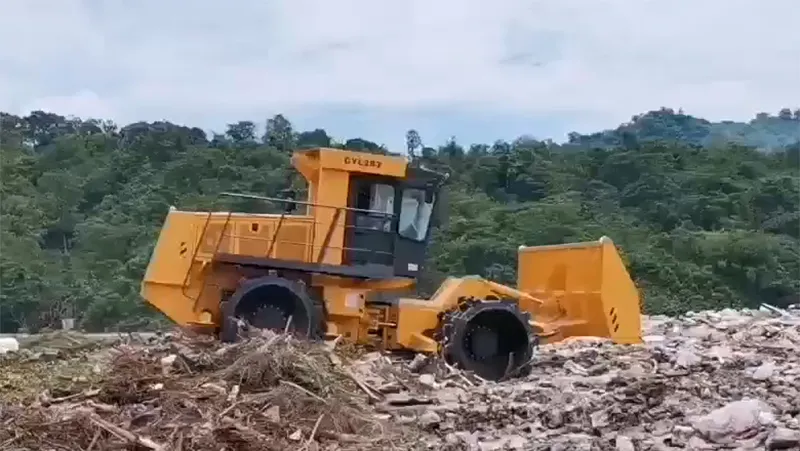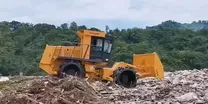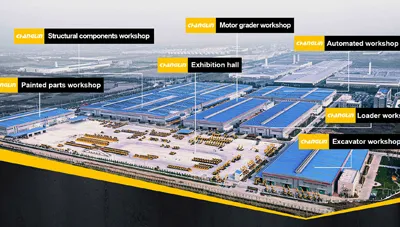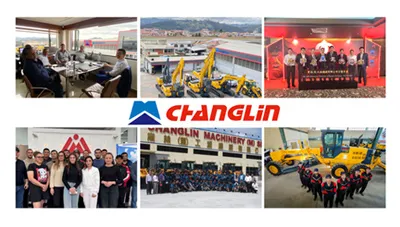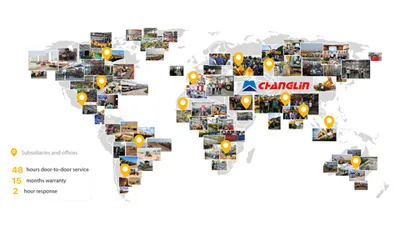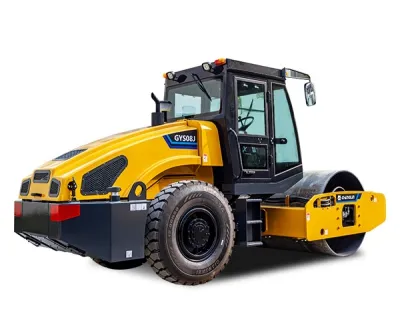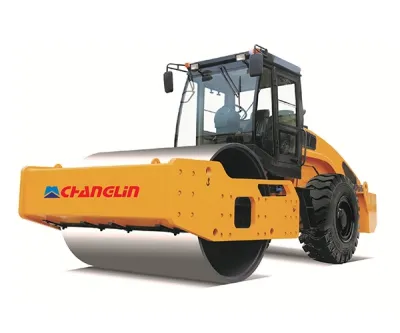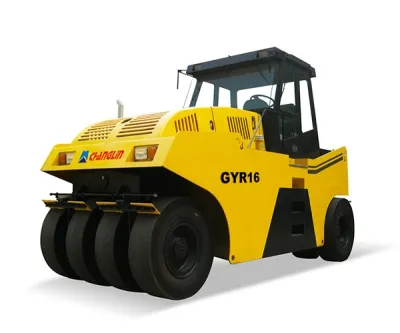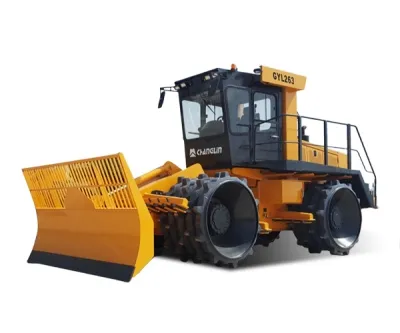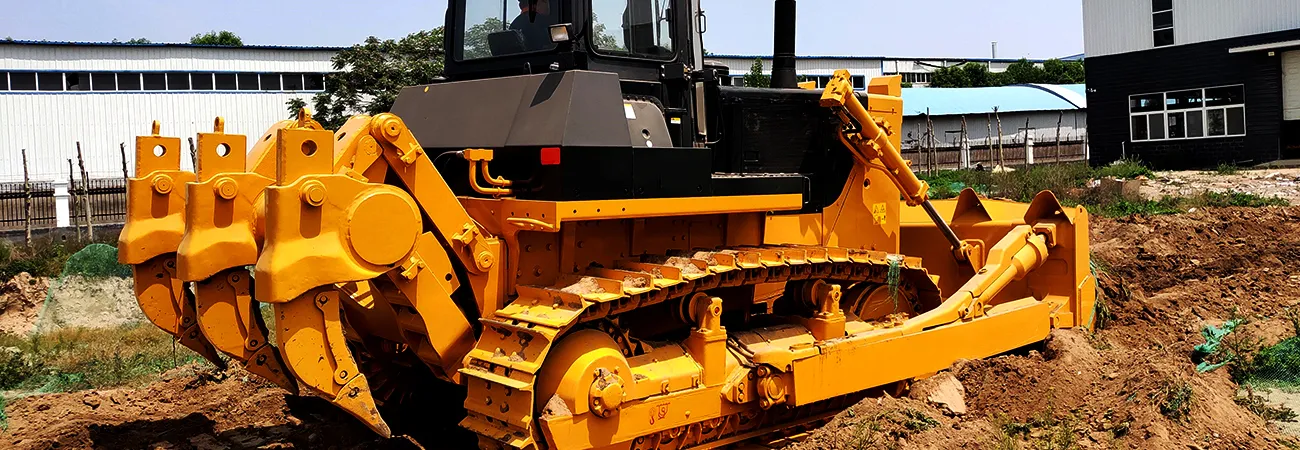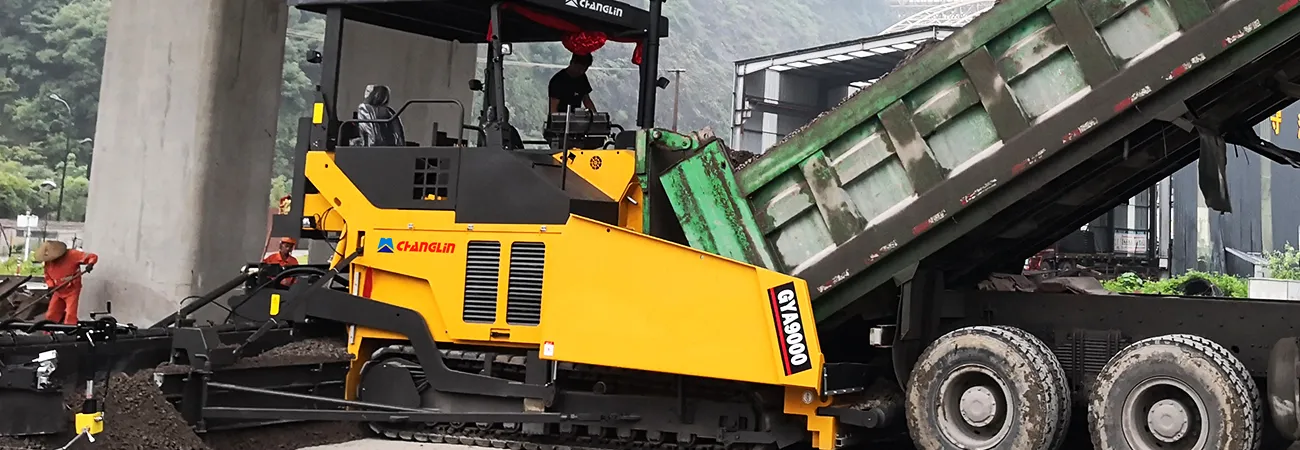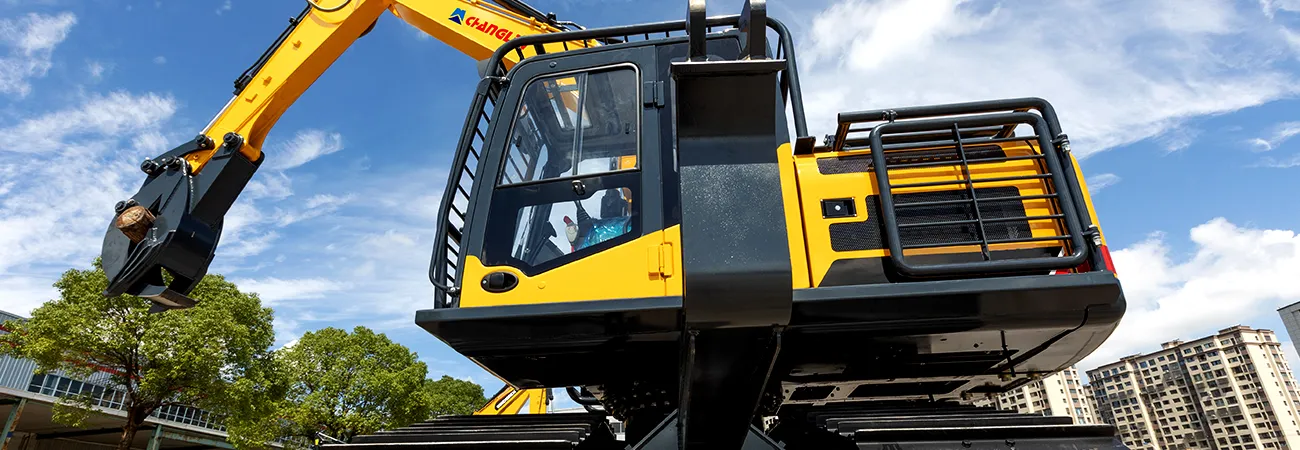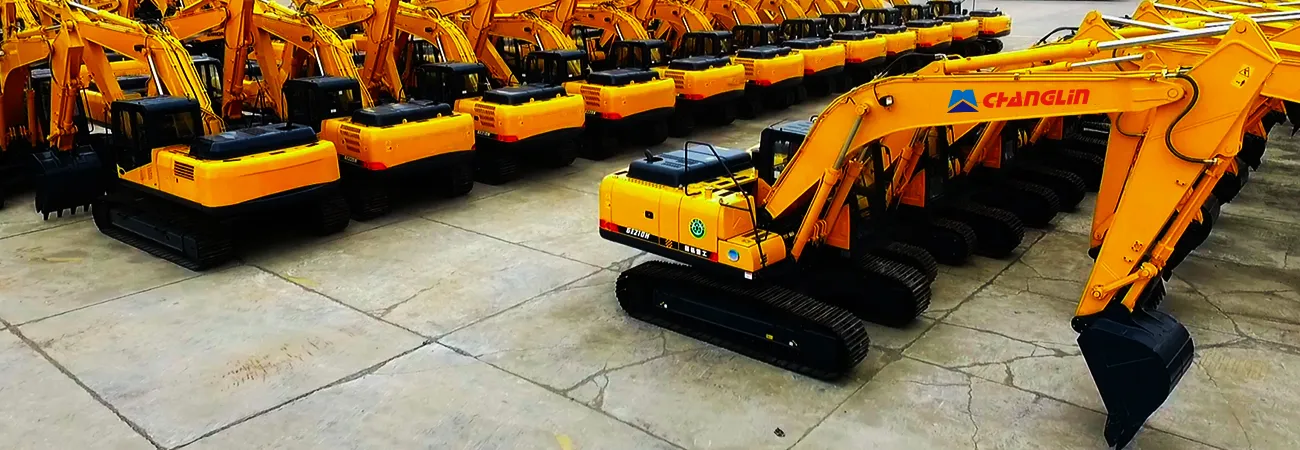
The compactor’s wheels are equipped with wear-resistant teeth and dual scrapers and wire cutters per drum. This configuration prevents wire entanglement and ensures the drums remain clean during operation. A built-in spray system helps control odors and deters insects, supporting hygiene at landfill sites.

Maintenance access is easier thanks to its rotatable cab and three viewing windows on each side of the engine hood. Steps and protective ladders on both sides offer safe and convenient access to key components.

For safer and more confident maneuvering, the machine integrates an infrared rearview monitoring system and an audible alarm, enhancing visibility and operator awareness when reversing.
- Model GYL263
- Operating weight 26000kg
- Compaction width 3430mm
- Travel speed 4.41/7.1/10.87km/h
- Gradeability 100%
- Dozer blade height 1880×3800mm
- Wheel base 3500mm
- Ground clearance 490mm
- Wheel width (front/rear) 1195/970mm
- Wheel diameter (front/rear) 1620/1620mm
- Teeth number per wheel (front/rear) 50/40
- Diesel engine model SC9D
- Diesel engine power 192kW
- Overall dimensions (to blade) 8150×3800×3810mm
- Overall dimensions (to outside of front tires) 8150×3400×3810mm
SINOMACH has developed a global footprint, with marketing and service systems covering over 100 countries and regions.
Subsidiaries in West Africa, India, and South Africa, a joint venture in Malaysia, with offices in Mexico, Argentina, and the Philippines.
Supplied large-scale turnkey equipment packages including excavators, loaders, bulldozers, rollers, and graders for major infrastructure projects in Africa, mining operations in South America and the CIS, highways in West Africa, and engineering projects across Central Asia.


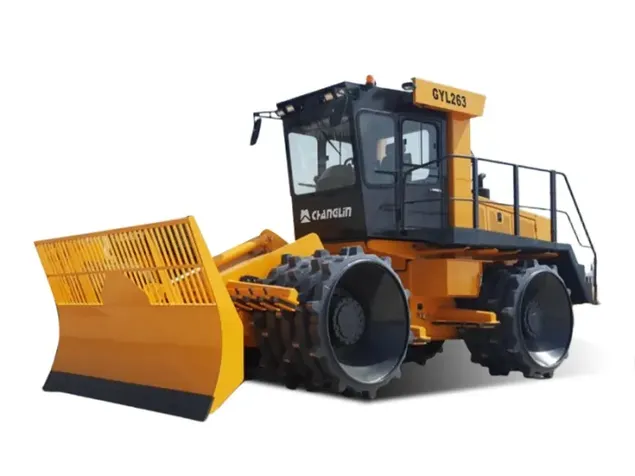
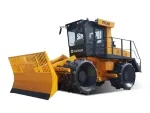

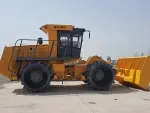

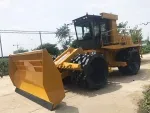
 Operating weight 26000 kg
Operating weight 26000 kg Compaction width 3430 mm
Compaction width 3430 mm Diesel engine power 192 kW
Diesel engine power 192 kW